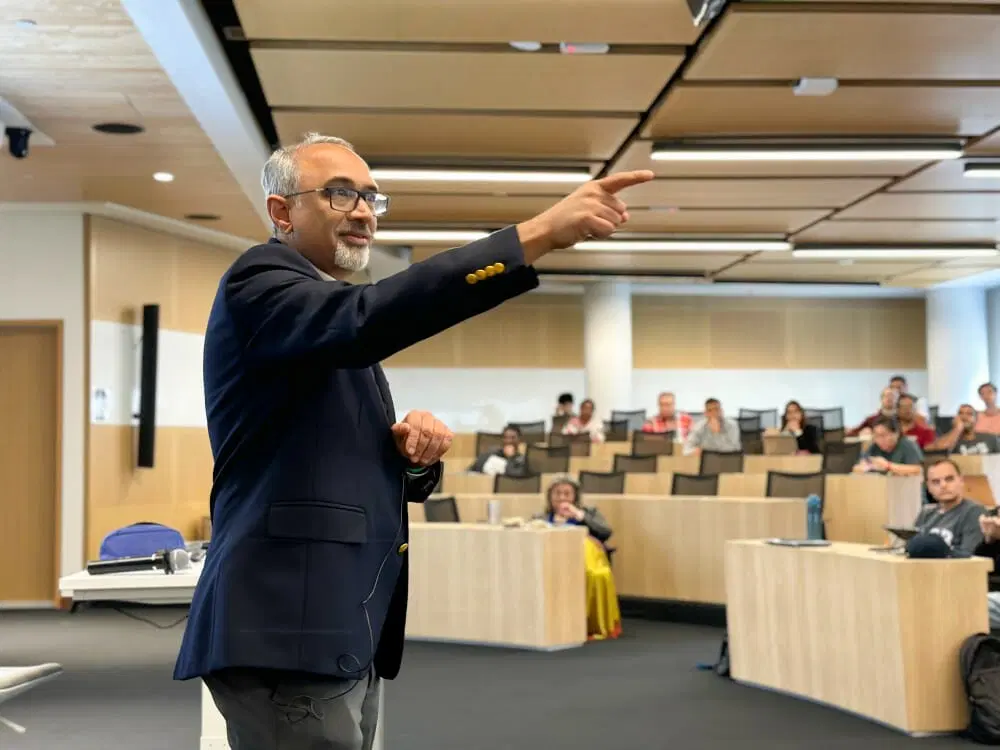HAVING a science, technology, engineering and mathematics (STEM) mindset is important for students pursuing these fields. STEM is a mindset and a framework not just for these disciplines, but also for life, said professor of mechanical engineering at the Sloan School of Management at MIT Sanjay Sarma, who has more than 20 patents to his name for radio-frequency identification (RFID) and Internet-of-Things (IoT) technologies. “Once you have mastery of a STEM mindset, you will view the world differently.
Every time you step into a lift or ride in a train, you will think about everything that makes it work,” he told StarEdu. Among Sanjay’s noteworthy achievements was teaming up with a group of Massachusetts Institute of Technology (MIT) researchers to develop a disposable and affordable smart diaper embedded with an RFID tag designed to sense and communicate wetness to a nearby RFID reader which can, in turn, wirelessly send a notification to a caregiver that it’s time for a change.
The process of inventing, said Sanjay, starts with an idea, followed by attempts to make it practical and realistic before a prototype is created and finally commercialised.“Invention is an instinct that is practised all the time. It comes from problem recognition, which is important, followed by a problem-solving mindset and the mindset of connecting dots,” he added.
On encouraging young children to actively participate in STEM, Sanjay, who is also Asia School of Business chief executive officer, president and dean, said the current approach of having them solely solving examination problems and passive listening in classrooms is inadequate. He suggested that a mindset shift towards the practical application of knowledge is necessary to promote deeper learning.
“We need to change the mindset towards the act of doing something with what they learn. This will encourage a sense of urgency, invention, application and commercialisation. “The fire that drives performance is curiosity. Once this fire is lit, it needs to be fanned with information. “The application is a form of internalising the information. The more this becomes a practice, the more likely that they will continue in that field,” he said.
Cognisant of the constantly evolving STEM field, Sanjay said it is crucial to stay updated on the latest trends and innovations. As an avid reader, he sets up news alerts to stay informed about the latest developments. He also takes time out every day to consider the implications of ideas expressed within articles, videos and podcasts. Sanjay said this approach has helped him stay ahead of the curve and be more successful in his endeavours within the field.
“It is not the only future but mastering STEM will pave the way for you to have a lot of options. “Task yourself to understand vaccinations for Covid-19, for example. How do vaccines work? What is mRNA? Grapple with it and you will develop a knack for mastering it. There are so many channels these days to learn from,” he said. Despite his enthusiasm for STEM, Sanjay believes that having an interest in the arts and humanities is crucial to becoming a lifelong learner, of which he is an advocate.
While he played a pivotal role at MIT in developing cutting-edge technologies that now form the backbone of RFID standards used worldwide, he also created innovative programmes for open learning during his decade-long tenure as the vice president for open learning at the varsity. “We are heading for a much more integrated approach in our economies and so, I recommend students to not be unidimensional.
“Study STEM but read a book, appreciate music, and try your hand at an art like painting. The mental muscles, like your body, need balanced activation,” Sanjay said, adding that the act of being committed to learning is equally as important. “In the end, always remember to practise diligence and perseverance. It’s worth it.” Now that you have read the article, test your understanding by carrying out the following English language activities.
- Name three technological inventions that you are most thankful for. Explain your choices to your activity partner.
- If you could ask Sanjay three questions, what would they be? With your partner, discuss his potential answers. Then, role-play the interview.
Originally published by The Star.





